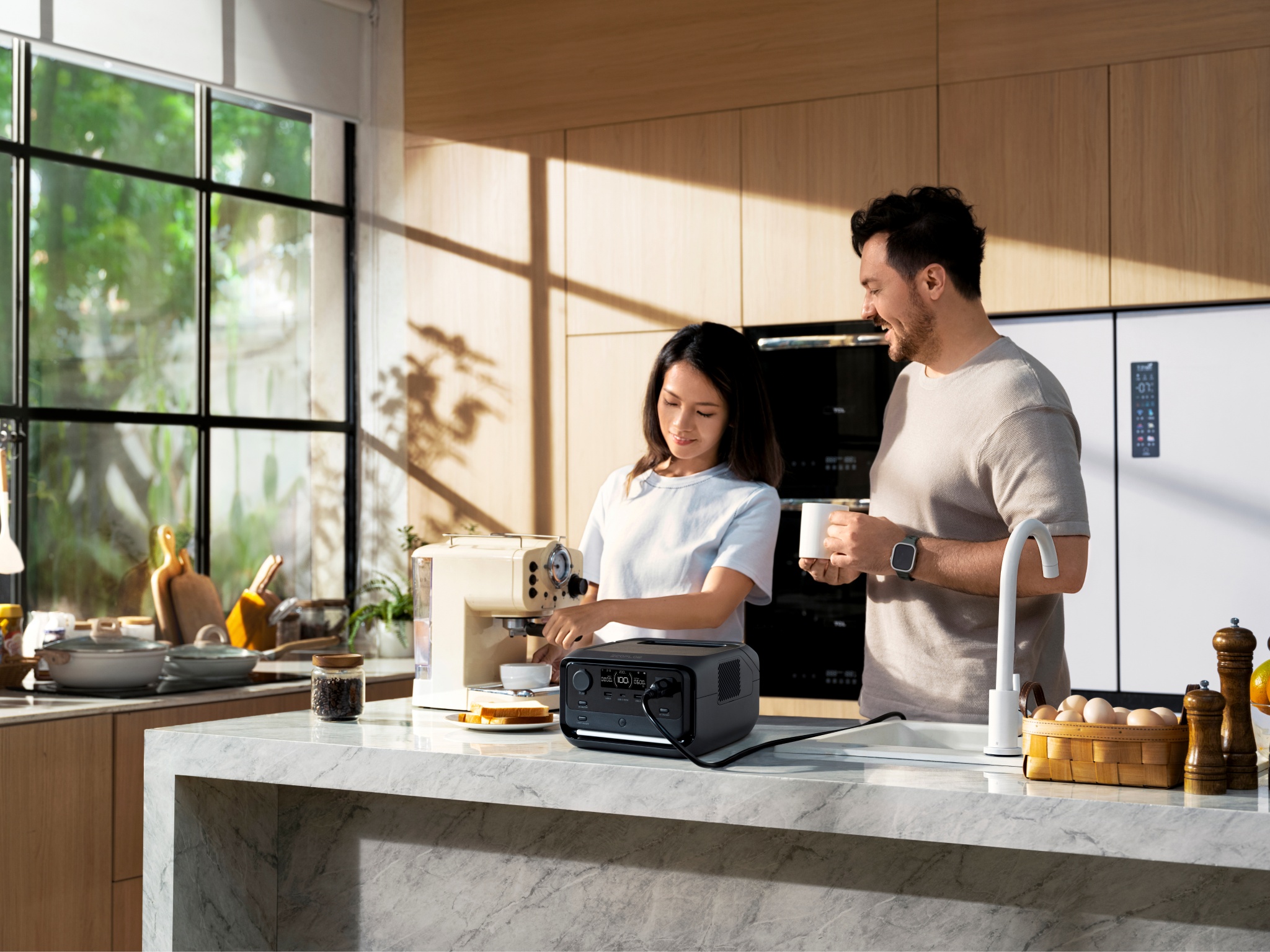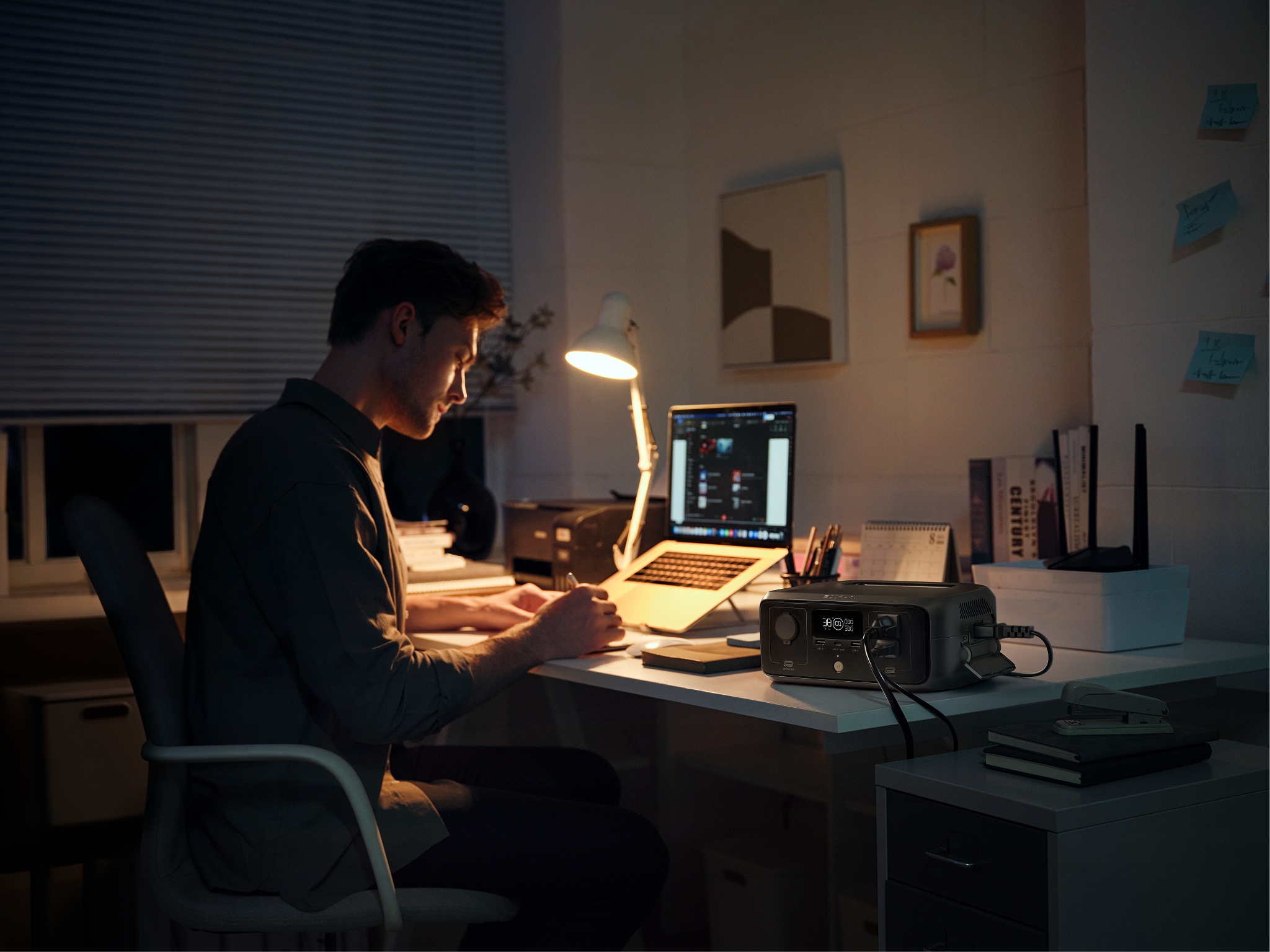- How to Know If You Need Battery Backup for Your Home
- Main Types of Home Battery Backup
- Partial Home Backup vs. Whole Home Backup: How to Choose
- How to Know the Proper Home Battery Backup Size
- Best Battery Backup for Home
- Key Takeaways for Reliable Home Power
- FAQs about Home Battery Backup: What You Need to Know
How to Size Your Home Battery Backup
- How to Know If You Need Battery Backup for Your Home
- Main Types of Home Battery Backup
- Partial Home Backup vs. Whole Home Backup: How to Choose
- How to Know the Proper Home Battery Backup Size
- Best Battery Backup for Home
- Key Takeaways for Reliable Home Power
- FAQs about Home Battery Backup: What You Need to Know
The power grid isn’t always reliable, but your life needs to be. Whether it's keeping your fridge running, staying online for work, or protecting medical devices, more homeowners are turning to battery backup as a safety net. The key? Picking a system that fits how you live.
How to Know If You Need Battery Backup for Your Home
Not every house needs a battery. But many do. The first step is asking yourself some questions.
- Do you live in a place with power outages often?
- Do you have medical machines at home that must run 24/7?
- Do you work from home and need Wi-Fi all the time?
- Do you use solar panels and want to save extra power?
- Do you want to keep food cold during a blackout?
If you say yes to one or more, then a home battery can help.
Some people only want backup for a few hours. Some want backup for days. You can choose what fits your needs.
Main Types of Home Battery Backup
There are two main groups: grid-connected and off-grid systems. Both have different features.
Type | Grid-Connected System | Off-Grid System |
|---|---|---|
Power Source | Uses grid power + battery | Only uses battery (and often solar) |
Use Case | Good for backup only | Good for living without the grid |
Cost | Less expensive | More expensive |
Solar Support | Optional | Often required |
Power Duration | Few hours to 2 days | 1 day to many days |
Best For | Suburbs, small outages | Remote homes, cabins |
Grid-connected systems are more common. They give you power when the main line fails. Off-grid systems help people who live far from cities


Partial Home Backup vs. Whole Home Backup: How to Choose
Some people only want to back up lights, the fridge, and Wi-Fi. Others want every outlet to keep working.
Partial Backup:
- Runs only the most important things
- Uses smaller batteries
- Costs less
- Easier to install
Whole Home Backup:
- Powers the whole house
- Needs large batteries or more than one
- Costs more
- May need extra equipment
So, how do you choose?
- If you only care about staying connected, go with partial.
- If your home has many needs, like medical tools or electric heat, then a whole home backup fits better.
How to Know the Proper Home Battery Backup Size
Good question. Let’s break it down.
Step 1: Know How Much Power You Use
You can find your power usage on your electric bill. It shows how many kilowatt-hours (kWh) you use each day or each month.
Example:
- Small home: 10–15 kWh/day
- Medium home: 20–30 kWh/day
- Large home: 30–50+ kWh/day
Write down the number.
Step 2: Pick What You Want to Power
You don’t have to back up everything. You can choose:
- Fridge (1.5 kWh/day)
- Wi-Fi (0.2 kWh/day)
- Lights (1 kWh/day)
- Phone and laptop charging (0.3 kWh/day)
- TV (0.5 kWh/day)
Add up the power use of what you want to keep running.
Fridge (1.5) + Lights (1) + Wi-Fi (0.2) + Phone/Laptop (0.3) = 3 kWh/day
So you’ll need at least 3 kWh per day of backup.
Step 3: Decide How Long You Want Backup
Some people want 1 day of backup. Others want 3 or more. Multiply your daily power needs by the number of backup days you want.
3 kWh/day × 2 days = 6 kWh battery needed
Tip: Add 10–20% extra space to cover hidden power use.


Best Battery Backup for Home
You now know your power needs. But which home battery backup is the best of 2025? EcoFlow.
Why? Because it’s easy to use, fast to charge, and comes in many sizes. Let’s look at the 3 best battery backups for the home of 2025:
EcoFlow DELTA Pro Ultra – For Whole-Home, Off-Grid, or High-Power Users
This is the most powerful home battery in the EcoFlow lineup. It’s ideal for full-home coverage, long blackouts, or off-grid homes.
Why choose it:
6–90 kWh expandable capacity — powers your entire house for weeks
7.2–21.6 kW output — handles central AC, ovens, and well pumps
Up to 16.8kW solar input — recharge a full day’s energy in 1 hour
0-ms UPS switching — no interruption during grid outages
0 dB silent backup (under 2000W loads)
Smart Home Panel 2 compatible — for seamless grid/off-grid control
IP54, weather-resistant — works in snow, rain, and heat
App control + modular setup — fits in closets, garages, and sheds
Perfect for homeowners who want full independence or need backup for everything—from medical devices to HVAC.
EcoFlow DELTA Pro – For High-Usage Families or Partial Home Backup
A versatile solution that balances power, portability, and home integration. Ideal for backup of essentials or extended blackouts.
3.6 kWh to 25 kWh capacity — scalable with Smart Extra Batteries
3600W AC output (7200W surge) — power fridges, pumps, dryers
The 6500-cycle LFP battery — lasts up to 10 years
6500W MultiCharge input — AC + solar + EV + generator
Works with Smart Home Panel — for automatic switchover
Double Voltage Hub ready — supports 240V appliances
No rewiring needed — easy to set up with a transfer switch
Best for families who want powerful backup without overbuilding.
EcoFlow DELTA 2 Max – For Small Homes, Apartments, or Budget-Friendly Backup
This compact option is ideal for daily essentials, partial backup, and quick deployment during emergencies.
2048Wh base capacity, expandable to 6144Wh
2400W output (X-Boost up to 3400W) — runs 99% of appliances
1000W dual solar input with 99% MPPT — efficient solar charging
Just 30dB noise level — ultra-quiet for indoor use
43-min 80% recharge (AC + solar) — fastest in its class
App-based energy scheduling — save money on peak-hour rates
Plug-and-play backup — connect to a transfer switch in minutes
Great for renters, light backup users, or those who want a portable, clean energy option.
Key Takeaways for Reliable Home Power
A home battery backup is no longer a luxury. If you face outages, rely on essential electronics, or use solar, a backup system keeps life running. Start by checking your power use and deciding how long you want support. From partial to whole-home systems, the right size matters. Among the top options in 2025, EcoFlow stands out with flexible, scalable solutions for every home. Whether you're in a small apartment or an off-grid cabin, there's a battery that fits both your power needs and your budget.
FAQs about Home Battery Backup: What You Need to Know
Q1: Can I run air conditioning with a home battery backup?
A: Yes, but you need to check how much power your AC uses.
- A small window unit usually needs 500–1000 watts per hour.
- A central air system may need 3000–5000 watts per hour.
If you want to run an AC for 5 hours, and it uses 1000 watts, you’ll need at least 5 kWh of battery capacity. For central AC, you may need 10 kWh or more. Most small batteries cannot handle this alone. You’ll also need an inverter that supports high wattage.
Q2: How long does a 5 kWh battery last during a power outage?
A: It depends on what you power. Here’s a basic idea:
- Powering only small devices like Wi-Fi, lights, a laptop, and a fridge may last 24 to 36 hours.
- If you also run a TV, fans, and a microwave once or twice, about 12 to 18 hours.
- If you include power-hungry appliances like a washing machine or space heater, it may last less than 8 hours.
The more items you run at the same time, the faster the battery drains.
Q3: Do I need solar panels with my battery backup?
A: No, you don’t need them, but solar adds big benefits.
Without solar, your battery has to be charged from the grid when power comes back. If the outage lasts a long time, and you can’t recharge, your battery will become useless.
Solar panels allow you to recharge during the day, even during blackouts. This helps your system run longer and stay useful even in multi-day emergencies. It also lowers your electric bill over time.
Q4: What happens when the battery runs out?
A: When your battery reaches 0%, anything connected to it will turn off. Your lights, fridge, or devices will stop working.
The battery does not switch back to grid power by itself unless it’s part of a smart home system. You’ll have to wait until the grid comes back or you recharge the battery (with solar or a generator). This is why it’s good to:
- Know your daily energy needs
- Set usage limits during outages
- Choose a battery with a little more capacity than you think you need
Q5: Can I install a home battery myself?
A: It depends on the system type.
Portable power stations are plug-and-play. No setup, no wiring..
Mid-sized backup systems for a few circuits may need a transfer switch. Some people install these with basic tools, but it’s safer to get an electrician.
Whole-home systems connect to your breaker panel and may need permits. These require professional help to meet safety rules and pass inspection.